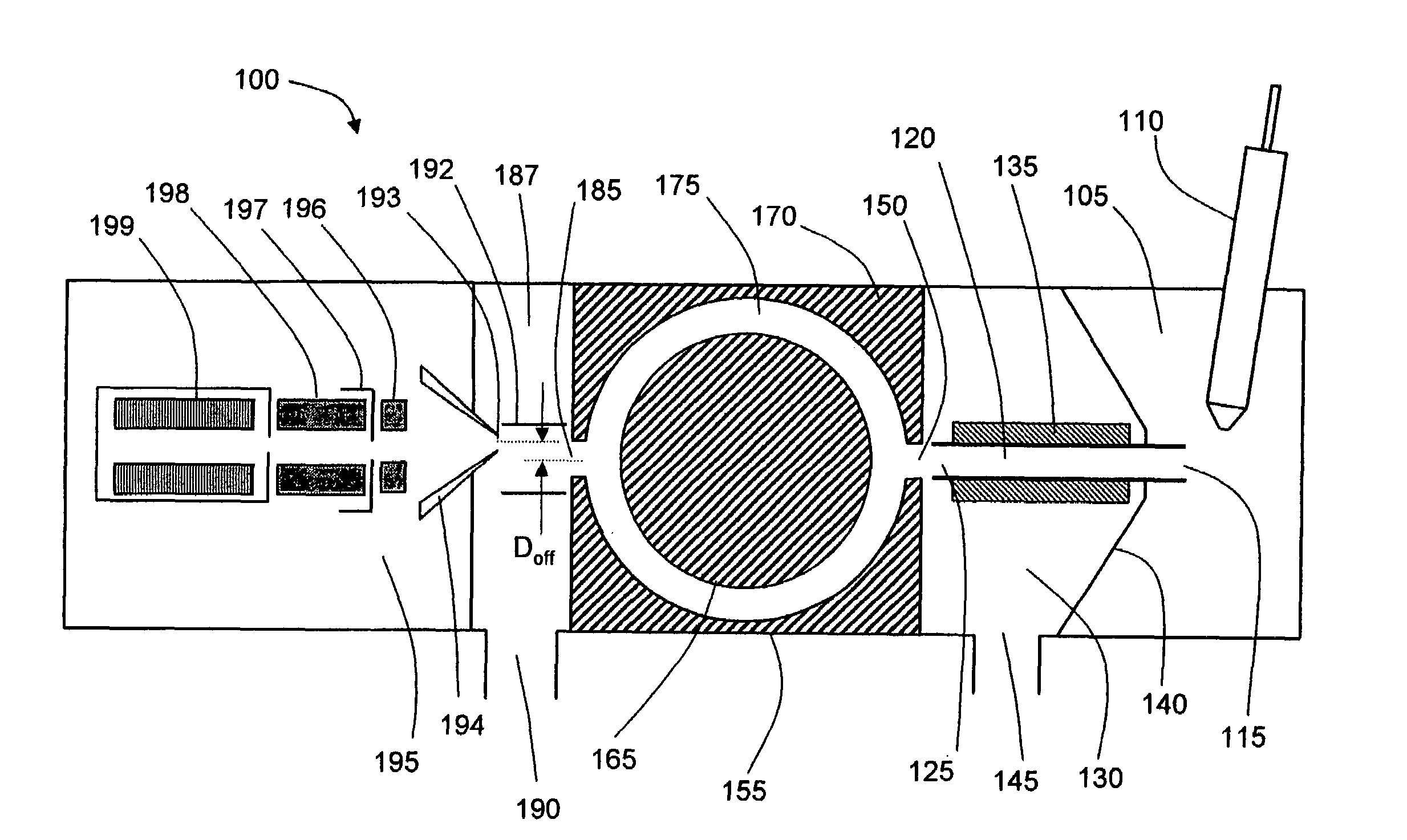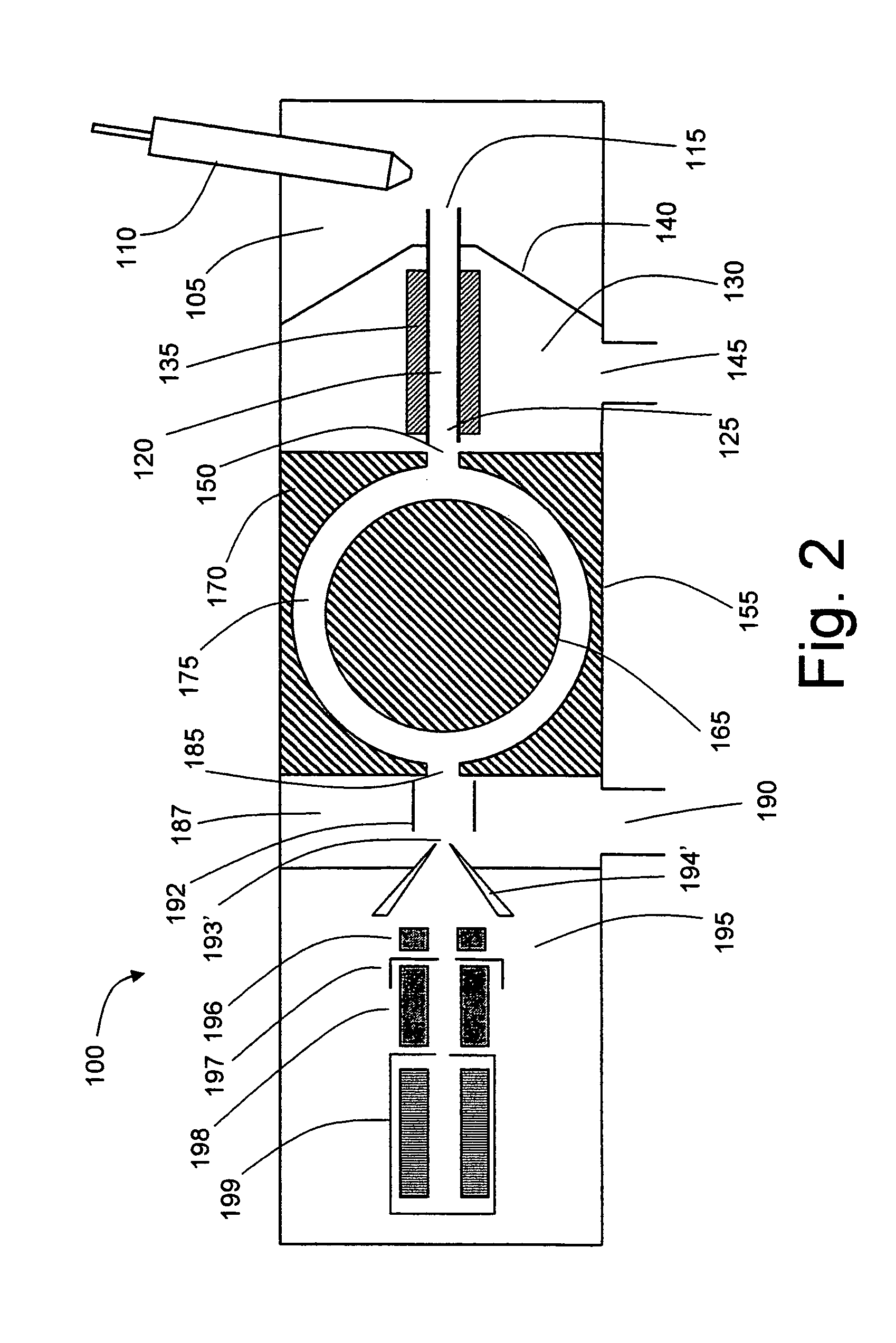Enhanced ion desolvation for an ion mobility spectrometry device
a technology of mobility spectrometry and enhanced ion desolvation, which is applied in the field of enhanced ion desolvation for ion mobility spectrometry, can solve the problems of peak broadening, loss of separation resolution, and significant compromise of the performance of the faims cell, and achieve the effect of promoting evaporation
- Summary
- Abstract
- Description
- Claims
- Application Information
AI Technical Summary
Benefits of technology
Problems solved by technology
Method used
Image
Examples
Embodiment Construction
[0014]FIG. 1 symbolically depicts a mass spectrometer system 100 configured in accordance with a first embodiment of the invention. A solution of sample to be analyzed is introduced as a spray of liquid droplets into an ionization chamber 105 via probe 110. Ionization chamber 105 is maintained at a high pressure relative to the regions downstream in the ion path, typically at or near atmospheric pressure. Probe 110 may be configured as an electrospray ionization (ESI) probe, wherein a high DC voltage (either positive or negative) is applied to the capillary through which the sample solution flows. This voltage imparts a charge to the droplets as they are emitted from the capillary exit. The charge accumulates at the droplet surface during solvent evaporation, causing droplet fragmentation and the formation of analyte ions. Other suitable ionization techniques may be utilized in place of ESI, including without limitation such well-known techniques as atmospheric pressure chemical ion...
PUM
 Login to View More
Login to View More Abstract
Description
Claims
Application Information
 Login to View More
Login to View More - R&D
- Intellectual Property
- Life Sciences
- Materials
- Tech Scout
- Unparalleled Data Quality
- Higher Quality Content
- 60% Fewer Hallucinations
Browse by: Latest US Patents, China's latest patents, Technical Efficacy Thesaurus, Application Domain, Technology Topic, Popular Technical Reports.
© 2025 PatSnap. All rights reserved.Legal|Privacy policy|Modern Slavery Act Transparency Statement|Sitemap|About US| Contact US: help@patsnap.com



